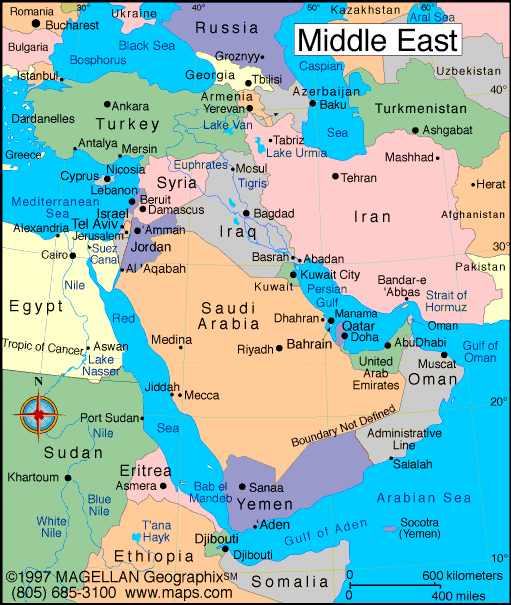
A Survey of non-Western Music and Culture
 |
MUS-3330 Worlds of Music | ||
A Survey of non-Western Music and Culture |
|||
| HOME :: Audio/Visual examples | |||
|
|||
The Arab World

A major difference between Western music and Middle Eastern music is that Western music tends to be based on a scale (sometimes called a key), while Oriental music is based on a maqam. In the words of the late San Francisco musician Mimi Spencer, a maqam is "something more than a scale, something less than a tune."
In typical Western music, there are 12 possible notes to choose from: C, C#, D, D#, E, F, F#, G, G#, A, A#, B. But only 7 of these notes are normally used in a given song. The 7 notes selected as the basis for a given song comprise a scale, and there are certain specific rules regarding which 7 notes can be used in a certain scale. For example, a typical Western song in the key of C Major will use only the notes C, D, E, F, G, A, B, C. The scale also defines certain relationships between the notes for determining which notes the chords will consist of, and which chords will serve as the basic building blocks for a given song.
In Arabic and Turkish music, the maqam utilizes only selected notes from the full range of possible notes available, so in that respect it resembles the Western scale. But the maqam goes farther in its influence on the resulting music. It also consists of a melody scrap based on certain key notes from that scale and a certain tendency of movement. So a song written in a certain maqam must not only use the particular notes in that maqam, but it must also incorporate the melody scrap for that maqam into the melody line of the song.